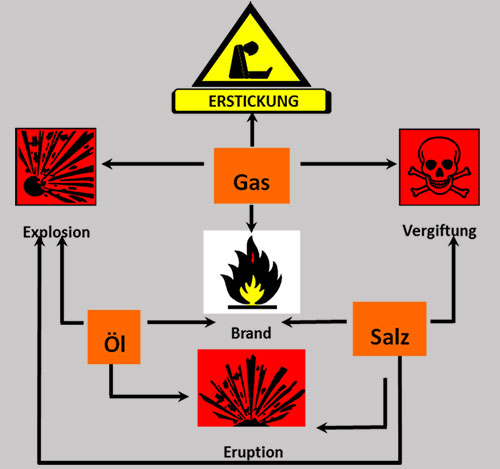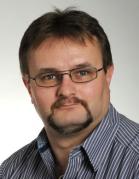Technical Committee 8 Safety in heat treatment plants

Members area AWT FA 8
Access to the AWT member area:
Goals and tasks:
There are many different sources of danger in heat treatment plants. Technical Committee 8 has set itself the goal of addressing safety-related issues of a technical and organizational nature for AWT members, providing assistance in solving safety-related issues and informing AWT members. Furthermore, developments in new laws and regulations are monitored in order to inform AWT members about important changes and innovations for the industry and to develop guidelines for implementation.
The close involvement of both experts and career starters from the fields of production, plant, operating materials and component manufacturing and development is an important basis for the development, dissemination and retention of safety-related knowledge.
Every member of the technical committee benefits from the exchange of experience and has the opportunity to expand their own knowledge. Non-binding guest participation is possible at any time.
Next session:
No entries available
Management:
73730 Esslingen
Management team:
70563 Stuttgart
Publications and information:
Questions on security-related topics (FAQ)
Important questions have already been worked out in FA 8 and made available in the following
FAQ collection:
Question 1: Is there grandfathering for older thermoprocessing equipment?
There is no grandfathering for machines and systems. The requirement of the legislator is that work equipment (machines, systems, ...) must be operated safely according to the state of the art* (Ordinance on Industrial Safety and Health (BetrSichV) §4 "Basic obligations of the employer", explanations on this in Notices on Industrial Safety (BekBS) 1114: "Adaptation to the state of the art in the use of work equipment"). The safe operation of older work equipment in accordance with the state of the art may require additional technical or organizational measures. One measure may be retrofitting, for example.
Excerpt from the Ordinance on Industrial Safety and Health
§2 Definitions
...
(10) The state of the art is the level of development of advanced processes, equipment or operating methods that makes the practical suitability of a measure or procedure for protecting the health and safety of employees or other persons appear certain. In determining the state of the art, reference shall be made in particular to comparable procedures, equipment or modes of operation that have been successfully tested in practice.
Question 2: Does a second valve have to be retrofitted in the process media supply lines on older thermoprocessing equipment?
In most cases, the use of a suitable filter upstream of the first safety shutoff valve is required.
Safety purge gas (such as N2) for purging or pressure maintenance, should be released by two de-energized open valves connected in parallel.
Question 3: How is CE marking done for equipment from multiple manufacturers?
Heat treatment systems regularly consist of machines from different manufacturers, such as ovens, handling devices and extraction systems. The question of CE marking arises time and again. The legal basis is the EC Machinery Directive 2006/42/EC (in Germany: Machinery Ordinance - 9th Ordinance to the Equipment and Product Safety Act).
In principle, there is only one EC Declaration of Conformity and CE marking for a machine. However, if several machines work together in terms of production technology, this does not automatically result in a "new" machine" in the technical vocabulary of "machinery as a whole" (interlinked system, complex system). An "assembly of machinery" is considered to be one machine and must fulfill the same requirements, such as a joint EC declaration of conformity and CE marking. The Federal Ministry of Labor and Social Affairs (BMAS) also included this issue in its interpretation paperon the subject of "machinery as a whole" from May 5, 2011 and provided assistance for clarification.
According to this paper, a group of machines is considered to be a whole if there is a production-related connection due to
- the arrangement of the individual machines to form a unit (here, particular emphasis is placed on the coherent installation)
- and the individual machines work together as a unit
- and the individual machines are operated as a unit (i.e. have a common control/command device)
and the individual machines function as a safety-related unit (safety-related connection).
If all these requirements are met, the machinery is considered to be a single unit and has a joint EC Declaration of Conformity and CE marking.
If these machines are purchased and assembled individually by the operator, he is responsible for the declaration of conformity and CE marking of this entirety of machines. This can also be commissioned as a service.
However, if the machinery is not an assembly, each individual machine has its own EC declaration of conformity and CE marking.
Example: A washing machine is installed in a chamber oven line.
- The batches are moved in the oven line by means of a manually operated loader. The washing machine is controlled independently of the other components in the oven line. There is no signal exchange. A malfunction in the washing machine has no influence on the control of the rest of the oven line and vice versa. There is no connection in terms of production or safety. The systems have separate declarations of conformity and their own CE marking.
- The batches are moved in the kiln line by means of an automated loader. The components of the oven line (e.g. washing machine, ovens, loader, etc.) each have independent controls. A safety-relevant signal exchange takes place. There is a safety-related connection but no production-related connection (no common control system), even if a higher-level control system coordinates the processes within the oven line. The systems have separate declarations of conformity and each has its own CE marking.
- The batches are moved in the kiln line by means of an automated loader. All components of the kiln line have a common control system and there is both a production-related and a safety-related connection. The systems have a joint declaration of conformity and CE marking.
Question 4: Is the replacement of a control system a significant change according to the Machinery Directive and does it require a new CE marking?
The answer to the question is essentially based on a pure replacement of the control unit. This means that the new control unit has the same functionality as the old control unit. Important information for the general consideration of whether a change to a system is a significant change within the meaning of the Machinery Directive can be found in the interpretation paper on "Significant changes to machinery" published by the Federal Ministry of Labor and Social Affairs (BMAS) on April 9, 2015.
The following statement can be found there regarding the replacement of components (including control components):
Excerpt from the interpretation paper"Substantial modification of machinery"
... The replacement of components of the machine with identical components or components with identical function and identical safety level as well as the installation of protective devices that lead to an increase in the safety level of the machine and that do not enable any additional functions beyond that, are not considered to be significant changes.
A 1:1 replacement of the control system is therefore not a substantial modification within the meaning of the Machinery Directive.
Example 1: Replacing Siemens S5 with S7
A typical case is the replacement of an old Siemens S5 control system with an S7 No safety functions may be implemented via a normal PLC. Therefore, simply replacing it with a modern PLC is not a significant change per se, as it does not interfere with the safety technology.
Example 2: Replacing the entire switchgear
The existing safety technology of the system, implemented via the switchgear, is sufficient, taking into account the state of the art at
.
If a 1:1 replacement is made here, this also does not constitute a significant change.
Example 3: Replacing a control system using conventional technology with a control system with a safety PLC
The previous control system using conventional technology is replicated 1:1 in a safety PLC.
The 1:1 transfer of the control logic means that the safety level is maintained, so there is no significant change.
Example 4: New control system according to the state of the art
The previous safety technology of the system, implemented via the switchgear, is not sufficient taking into account the state of the art or is not clearly comprehensible due to missing or incomplete documentation. The safety functions must therefore be implemented in the new control system according to the current state of the art. This may involve adjustments to the system itself, e.g. conversion to double valves.
This generally leads to an improvement in the safety of the system due to advances in safety technology. According to the interpretation paper on "Substantial modification of machinery", an improvement in safety in particular does not constitute a substantial modification within the meaning of the Machinery Directive.
Excerpt from the interpretation paper "Substantial modification of machinery"
...
The replacement of machine components with identical components or components with an identical function and identical safety level, as well as the installation of protective devices that lead to an increase in the safety level of the machine and that do not enable any additional functions, are not considered to be a substantial modification.
...
New functions of the thermoprocessing system
If new functions are introduced as part of the control system replacement, it must be checked in accordance with the interpretation paper on "Substantial modification of machinery" whether these lead to a substantial modification of the thermoprocessing system within the meaning of the Machinery Directive.
Note:
For thermoprocessing systems in operation, it must generally be checked whether they are operated safely in accordance with the state of the art. Retrofitting may be required here regardless of whether the control system is replaced.
See also FAQ question 1: Are older thermal processing systems protected?
Definition: Significant change as defined by the Machinery Directive:
A significant change within the meaning of the Machinery Directive requires a renewed declaration of conformity and CE marking for machines with CE marking and an initial declaration of conformity and CE marking for older machines without CE marking.
Question 5: When do leak tests have to be carried out on gassing equipment in heat treatment plants?
a) Must fumigation equipment (pipelines and assemblies in accordance with the Pressure Equipment Directive) be tested for leaks to the environment (external leaks)?
The answer to this question is a clear "YES". A leak test must first be carried out when the assembly is set up/constructed and then when it is commissioned.
Welded connections are considered to be technically permanently leak-tight. For other connection technologies, this depends on the manufacturer's specifications or approvals of the connection technology, including the associated requirements. A specific statement on the scope and interval of the tests must be made by the manufacturer of the system in the maintenance information (operating instructions/manual) for the system (DIN EN 746-3 - Section 7.3.3 "Inspection procedure" Edition 2022-11).
Since there is no grandfathering for "old systems" (see FAQ question 1) and the systems must always be kept up to date in terms of safety technology, tests must also be carried out on existing fumigation systems in their entirety (piping, measuring equipment, shut-off components, etc.).
If no statement was made in the original documentation, a regulation must be specified in the operating instructions/maintenance instructions by the operator. The implementation of the measures and up-to-dateness of the documents is checked as part of the recurring risk assessment (§ 3 BetrSichV) and revised if necessary. In general, the Technical Committee 8 recommends an annual inspection of the gassing equipment.
All information relates only to the pipelines and assemblies in accordance with the Pressure Equipment Directive that are part of the heat treatment system. These always start at the stopcock or at the separators in the inlet of the central supply line of the respective medium to the system.
The respective national regulations (in Germany according to DVGW) apply to the supply lines up to this point.
What should these tests look like?
The tests can be carried out as spray bubble leak detection or as a pressure drop test. (The use of soapy water should be avoided.)
The test pressure must be 1.1 times the highest operating pressure, but at least 5 kPa (DIN EN 746-3 - Section 4.2.7 "Leak tightness" Edition 2022-11).
In the case of a pressure drop test, the device used should be calibrated. Maximum permissible leakage rates must be specified for the tests. These depend on the total volume of the system part to be tested, the test gas, the number of components and detachable connections as well as the ambient temperature. Leak rates of 1 l/h (gas) and 1 ml/h (liquids e.g. methanol) are not considered critical (DIN EN 746-3 section 4.2.7 "Tightness" edition 2022-11).
b) Do components installed in pipelines have to be subjected to a leak test (internal leak tightness)?
The answer to this question is also a clear "yes". All valves, shut-off and adjustment devices as well as display and control devices in the piping system should be tested annually for internal leaks (DIN EN 746-3 - section 4.3.1.2.5 "Automatic shut-off valves" edition 2022-11). In the case of solenoid valves, the guaranteed number of switching cycles (valve manufacturer's specification) and the actual switching behavior (switching frequency) also limit the necessary replacement of the valves. If possible, the piping systems should be designed (e.g. by installing additional manual shut-off valves) in such a way that a section-by-section test or a test of the components in the installed state is possible.
A pressure drop test is a suitable test method here. The leakage rates can be calculated from the technical data of the shut-off devices and valves used.
Question 6: May work on natural gas pipelines only be carried out by DVGW installation companies?
The answer to this question is a clear "it depends". It depends on the area of the pipeline in which the work is to be carried out.
Natural gas distribution area
The Energy Industry Act (EnWG) applies here and the DVGW regulations are the binding technical regulations for this area. The EnWG applies up to the last shut-off device upstream of the thermal processing plant. In this area, work on natural gas pipes must be carried out by DVGW contract installation companies.
Thermoprocessing plant area
The thermoprocessing plant begins after the last shut-off device of the natural gas distribution system. The Ordinance on Industrial Safety and Health (BetrSichV) applies here. This is outside the scope of the DVGW regulations. However, the DVGW regulations also represent the state of the art for work on natural gas pipelines.
This means that the formal requirements from the DVGW regulations (e.g. work on natural gas pipelines only by DVGW contract installation companies) are not binding; the requirements for the qualification of the personnel carrying out the work and the technical execution must be based on the DVGW regulations.
The facts are very well and clearly presented in the DVGW information leaflet "Natural gas in industrial gas supply and use - Important information on the legal framework, operator obligations and qualification requirements".
Publication on safety aspects of staff-free times in hardening shops
In hardening shops, the question regularly arises as to whether personnel must be present in hardening shops at all times. This article from AWT Technical Committee 8 "Safety in heat treatment plants" is intended to support hardening shops in planning staff-free periods. Due to the different designs of hardening plants and processes and the age of the plant, this article can only provide suggestions for the development of such a concept.
Further publications




